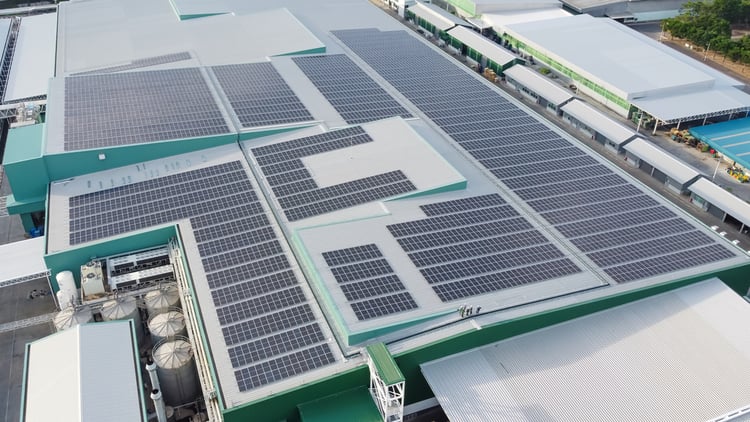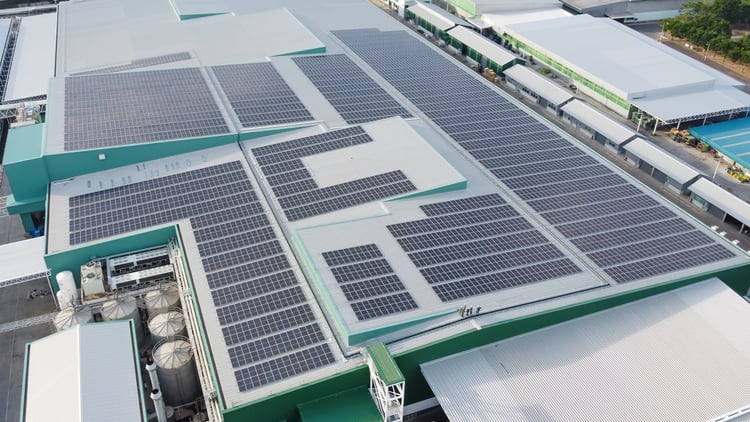Solar energy has become the fastest growing source of electricity in the US, and this represents billions of dollars invested every year. Photovoltaic technology has been used successfully around the world, but a feasibility study is recommended before any installation. This involves not only the technical aspects of installing solar panels, but also their financial performance over time. In this article, we will review some basic financial analysis concepts that are used to decide whether a solar energy project makes sense.
Get a professional feasibility study and design for your commercial solar energy system.
Energy efficiency and renewable generation projects are often presented with a simple payback period: How long should the owner wait before recouping the initial cost? For example, if a commercial solar panel that saves $100,000/year has a cost of $600,000, the simple payback period is six years. However, this approach can be misleading because most projects are not paid for in a single upfront lump sum.
Many businesses and building owners prefer to avoid upfront costs by taking out a loan, which is paid back over time with savings. Ideally, you should look for a loan that results in annual payments that are less than your energy savings. The direct cost becomes zero, the payback period is instantaneous, and the project essentially pays for itself.
The best financial performance metrics for solar energy projects

The simple payback period is popular due to its simplicity, but it has two limitations when applied to solar energy projects:
- The calculation assumes you pay the full cost of the project upfront, ignoring loan financing and ongoing costs such as replacing parts.
- The simple payback period also assumes that annual savings remain constant, which is not the case. Energy prices tend to increase over time and the savings obtained from renewable generation also increase.
To get a better idea of how a solar panel system will perform financially, you can use the metrics outlined in the table below. Unlike the simple payback period, these financial metrics take into account loan financing, maintenance and external factors such as electricity price inflation.
|
Financial Metric |
Description |
|
Net Present Value (NPV) |
The economic value of a project in current dollars, considering all savings and costs over its useful life. |
|
Levelized Cost of Electricity (LCOE) |
The average electricity price at which the solar project breaks even. LCOE can also be described as the yield per kWh or savings per kWh at which the project breaks even. |
|
Benefit Cost Ratio (BCR) |
Economic benefit achieved per dollar invested, expressed in current dollars. |
In general, an investment makes sense if the net present value is positive and the benefit/cost ratio is greater than 1. When a project breaks even in today's dollars, the NPV becomes zero and the BCR is exactly 1. A negative NPV and a BCR below 1 indicate that a project loses money and the owner should consider other options.
The Levelized Cost of Electricity or LCOE can be a complicated financial metric. It can be described in simple terms as the value of electricity at which the solar power system breaks even, but it has different meanings depending on the objective of your project: are you generating electricity for self-consumption or are you selling it through the grid. ? To better understand the concept, consider a solar project with an LCOE of 10 cents/kWh.
- If the project is used for self-consumption, the LCOE of 10 cents/kWh represents the minimum savings necessary to reach the break-even point. This project would make sense if your electricity supplier charged 15 cents/kWh, but it wouldn't make sense if it charged 8 cents/kWh.
- On the other hand, if you sell the electricity from the solar PV system, the LCOE represents the minimum selling prices at which you break even. In this example, electricity must be sold for at least 10 cents/kWh.
Savings per kilowatt-hour of solar energy tend to change over time, while the LCOE calculation assumes a constant price throughout the lifetime of a project. However, LCOE is a useful metric when comparing different sources of electricity and also when deciding whether an on-site generation system is a better option than your electricity supplier.
How Solar Incentives Affect Your Financial Analysis

There are many types of incentives for solar energy , and they vary by location. All solar photovoltaic systems in the US are eligible for a federal tax credit, regardless of their size, and business systems also qualify for accelerated depreciation ( MACRS ). You can write them off in as little as five years for tax purposes, while their typical useful life is over 25 years. Additional incentives may be available depending on your state, city and power company. They may include cash rebates, renewable energy certificates (REC), or local tax benefits beyond the federal ITC and MACRS.
A solar financial analysis is only accurate when it also considers local incentive programs. In general, incentives will increase the NPV and BCR while shortening the payback period. Incentives that reduce ownership costs will also reduce LCOE, meaning the project can break even with lower electricity prices.

